Exercise 2.1: Questioning voices by investigating the various research materials I have identified to deepen and broaden my thinking about theoretical ideas as this material will form the basis of my proposal for my CR writing.
KEY ARGUMENTS
Connectedness and Ubuntu
Here I will share text to introduce the meaning and arguments. Ubuntu is derived from a Nguni (isiZulu) aphorism: Umuntu Ngumuntu Ngabantu, which can be translated as “a person is a person because of or through others.” It is often meant in a more philosophical sense to imply the belief in a universal bond of sharing that connects all humanity.
“I am because we are” is the idea that humans are fundamentally connected to each other and the world around them. I found the following quote very inspiring:
“There is a word in South Africa — Ubuntu — that describes his greatest gift: his recognition that we are all bound together in ways that can be invisible to the eye; that there is a oneness to humanity; that we achieve ourselves by sharing ourselves with others, and caring for those around us,” B Obama, October 2018, Lecture delivered in South Africa on Nelson Mandela.
These principles can encourage artists to see themselves as part of a larger whole, fostering a culture of mutual respect, understanding, and support. By embracing diversity, one should recognise and appreciate different styles, techniques, and cultural backgrounds. Be open to learning from artists with diverse perspectives. Ubuntu reminds us that we are part of a vast ecological community, and by recognizing and honouring this interconnectedness, humans should work towards a more harmonious and sustainable coexistence with the non-human world.
Ursula Le Guin and The Carrier Bag Theory of Friction – the stories we tell matter
I like the idea of a writing which marks the beginning of a new adventure in the unknown – this is how this book by Le Guin starts. I like to be thinking that I can make art which also asks questions of the type of world I would like to live in and explore more possibilities we can gather, hold, tell, collect and keep telling the untold, or other stories.
The idea of a container for stories and methaphors to be told and use of arguments/perspectives that explore similar ideas and expanding on my arguments. I believe they serve a very special role in my own understanding of the world of the non-human and also that they take a point of view
The Carrier Bag Theory of Fiction by Le Guin has the idea of a recipient, a container to hold and a sling as it is carried at the heart of being a human. This approach to storytelling is part of a more extensive feminist engagement with knowledge production which I can use as a key argument around ideas of making work around containers/vessels and dealing with loss. In my making, I made paper mache vessels and started making nests while considering the idea of containment and being a holding space. Viewing nests as intricate structures made me aware of birds’ remarkable instincts and adaptability in creating safe spaces for their offspring. As a symbolic container, a nest holds meaning beyond its physical form. It has become a space where I can investigate ideas around nurturing and containment or being a holding space. This helps me deal with loss, memory, fragility, and transformation ideas. I also learned about the material qualities of other materials, such as plant fibres. I also think that mushrooms and mycelium taught me about interconnectedness within species as they adapt together.
I can share personal stories – like my feather installation and daily drawings of feathers over time and the healing that came from making and thinking about loss. In working with mushrooms and reading about them I come to a conclusion that death is integrated in life as we are all humus’, like plants, which in turn will give rise to new life. ( Here Tim Ingold ideas will be explored if needed)
Care and Maintenance
Looking at artists who work with this idea I am inspired to make work with mushrooms and nests as its takes time to make and maintain. Xiaojing Yan shares her work with mushrooms which focus on ideas of care as being instrumental to produce a final outcome, namely a sculpture with growing mushrooms. I also looked at my collaboration work, Involution, as an outside site work as time-based and care. My tutor later suggested I look at the work of Gabriele Orozco, Working Tables, as a way to understand my own creative process in terms of what, how and why I make/do. It is also here where I came to some form of an enlightened moment, that I am working like a magpie.
Rhizomatic ideas of Tim Ingold and Ubuntu and how this maps out the questions and ideas that will hopefully establish the link between my written and practical research.
My reading has convinced me, that while they come from different philosophical traditions (Ubuntu African philosophy) and rhizomatic ideas from (French post-structuralism), there are some interesting parallels in their emphasis on interconnectedness, non-hierarchical structures, and the rejection of fixed boundaries. The image of a rhizome which Ingold holds, connects with nature, the trees, the soil and even mycelium – they are all structures unfolding connections. The rhizome becomes a decentralized structure emphasising relationships’ dynamic and ever-changing nature. I have concluded that this concept integrates both living and non-living elements: it recognizes the importance of non-human actors in shaping the system. Similarly, nature incorporates living organisms like trees and mycelium and non-living elements like soil, water, and air, all working together as part of a holistic system.
Jane Bennet and ‘vital materiality’ (Vibrant Matter, 2010)
Bennet urges readers to consider the “vital materiality” that runs through all things and bodies and the enormous environmental and political consequences of human ignorance of this. She argues against human exceptionalism and the concept that human bodies are unique, independent, and unaffected by the world outside their own skin/being. She writes, “an active becoming, a creative not-quite-human force capable of producing the new buzzes within the history of the term nature. This vital materiality congeals into bodies, bodies that seek to preserve to prolong their run” (2010: 118). Bennett suggests that humans might do well to postpone questions of subjectivity and do away with the obsession of identifying what distinguishes humans from plants or anything else, and inquires as to how anthropomorphism might be a helpful tool despite many scholars’ aversion to it, as, “too often the philosophical rejection of anthropomorphism is bound up with a hubristic demand that only humans and God can bear any trace of creative agency” (2010: 120).
Natasha Mayers: Conspire with plants ( my idea that I collaborate with my material)
Natasha Mayers suggests that “our worlds will only be liveable when people learn how to conspire with the plants’. This strong statement invites us to see ourselves as part of a larger community of beings, working together for the planet’s and its inhabitants’ collective well-being. By arguing for conspiring with plants in my research, I promote a vision of interconnectedness and ecological consciousness that aligns with the broader goals of environmental conservation, sustainability, and a livable world for all humans and non-human. I also place less importance on the human as being at the top of the chain.
This perspective can inspire environmental advocacy and activism, focusing on the well-being of the entire ecosystem rather than narrow human interests. Conspiring with plants encourages us to view plants and other living beings as deserving of care and consideration rather than merely as resources for human use. By acknowledging the agency of plants, we move away from the assumption that only humans significantly impact the environment and recognize that other living beings also shape the world in meaningful ways. I can share her work, Becoming Sensor, a research-creation collaboration between filmmaker and dancer Ayelen Liberona and Myers to bring in other voices. The artwork accompanying the story is done with purple and turquoise colours.
STUDIO PRACTICE – map out the questions and ideas that establish a link between your written and practical research
Can I make work that show connectivity and inter-dependency in nature?
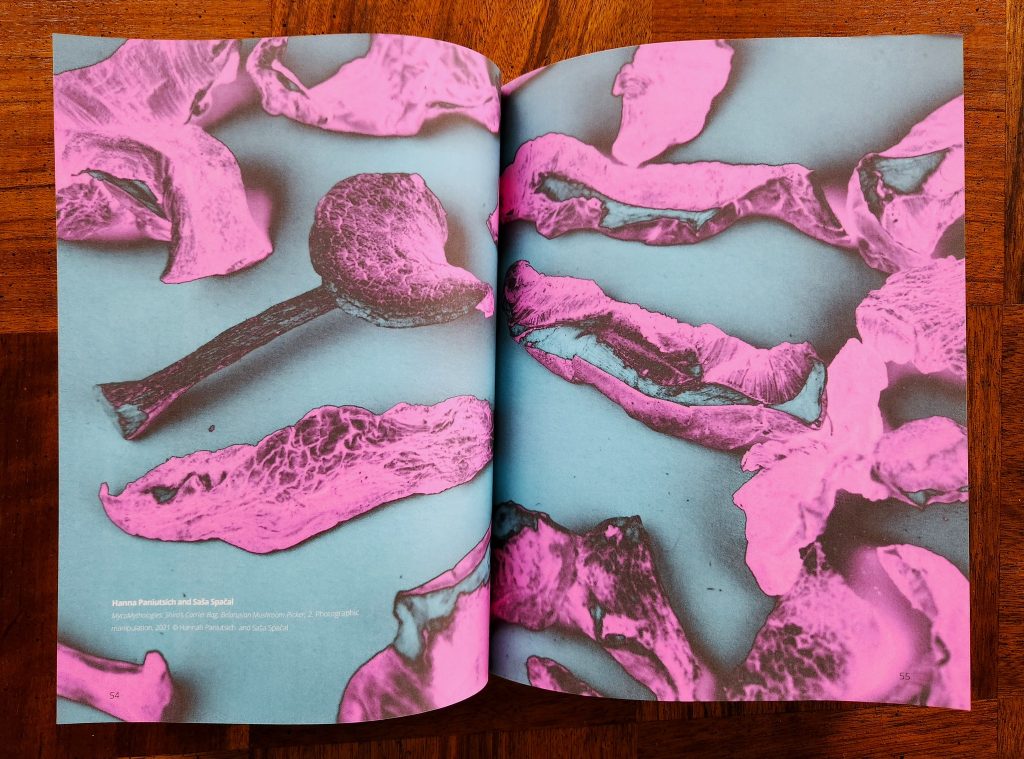
I found that in my drawings and paintings of mycelium, I created what seems helpful in the bigger picture, that is, to show connectivity. There is no one route, and things are not made in an order like a map to follow. It is for the viewer to choose what to follow and find or make connections. The work of Sasa Spacal and the collective, called Submergence,(shown above) shares thoughts of making with the other in their making.( I follow her on IG) I like that she uses the ideas of stories, which links with my interest in Le Guin. Stories create an inclusive practice that one can explore as a practice for multispecies survival. I can also connect her work with that of P Piccinini, whom I have been looking at to use in my essay.
Her work, Shiro’s Carrier Bag, in collaboration with other artists, is a speculative fiction, collection of stories, and the artist gives credit to experiences of MycoMythologies in Storytelling Circle workshops. In these workshops, ideas around participatory methodologies were born by working with spores, guided meditation, sound walks, weaving, etc. Shiro is a hybrid create, part human, part fungi and is called to the Underworld, here her body decomposes and her memories and stories are dispersed into network and woven into new meanings. The work was published in an online, peer-reviewed journal, Antennae. I later learned that Sasa Spacal was doing this as part of her MA Fine Arts degree. This is a high-tech work in many ways, with layers of videography, photography, x-rays, biology, soundwaves and lighting. One can look at the work as large-scale documentation. I do like to think that this is something I could investigate in further developing my work.
My daily process of searching for meaning and learning in making work around connections and interweaving:
With the weaving of nests, the same thoughts come to the front, and meaning was found in making choices around material and the way I create or try to find form in vessels and then starting to construct a nest. Below are images of recent work around weaving and nests I have made. I share the thinking focussed on making here – as lines of material form the objects, learning takes place in the making. I owe a considerable acknowledgement to my fellow textile students and the book by Ruth Woods, Finding Form with Fibre (2022), for the inspiration and exploration of materials to create sculptural forms.
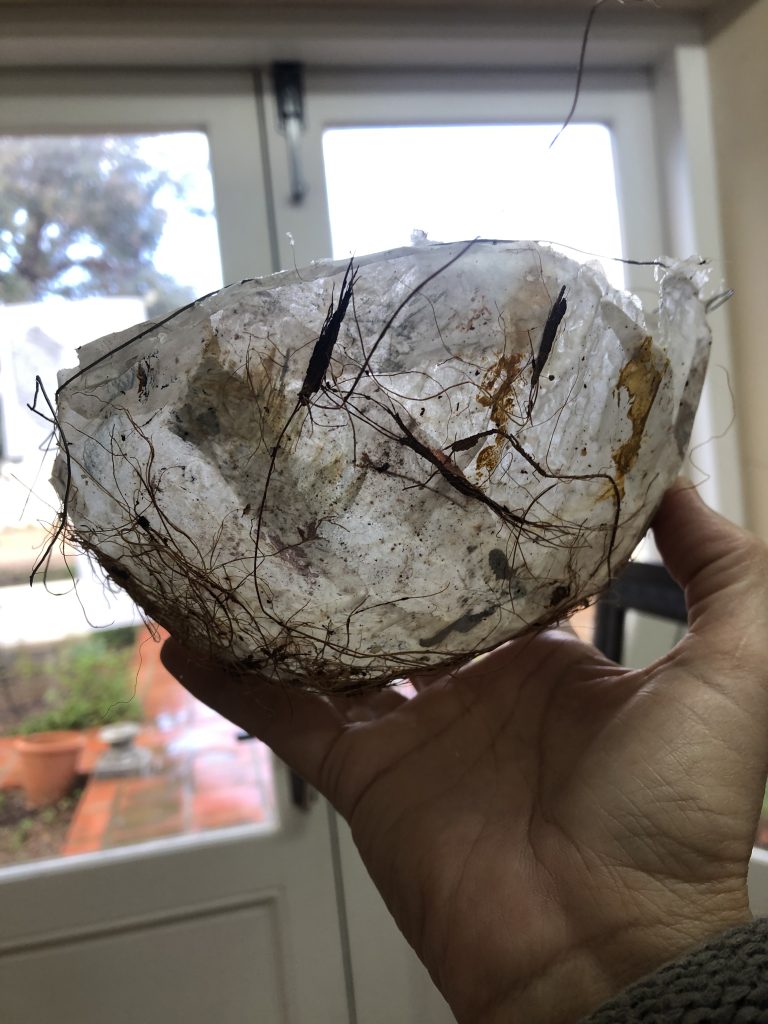
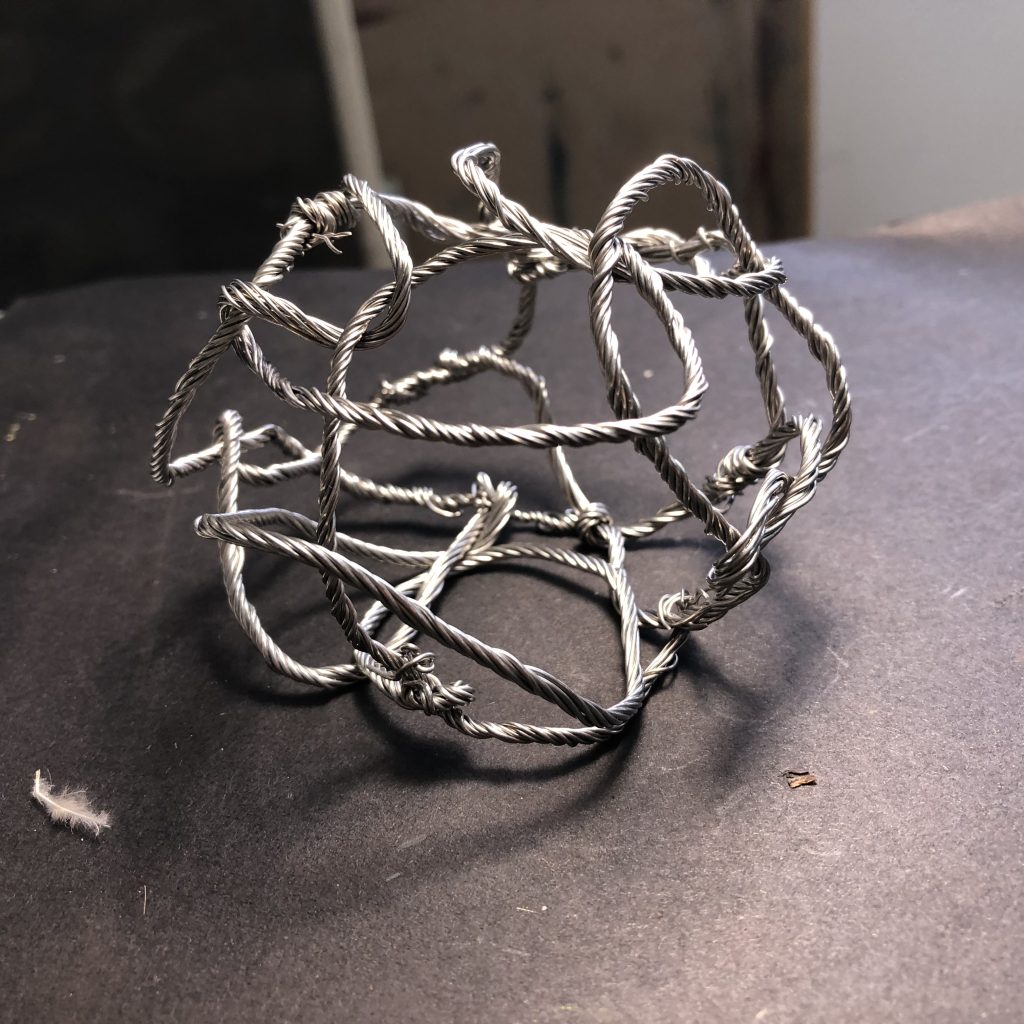
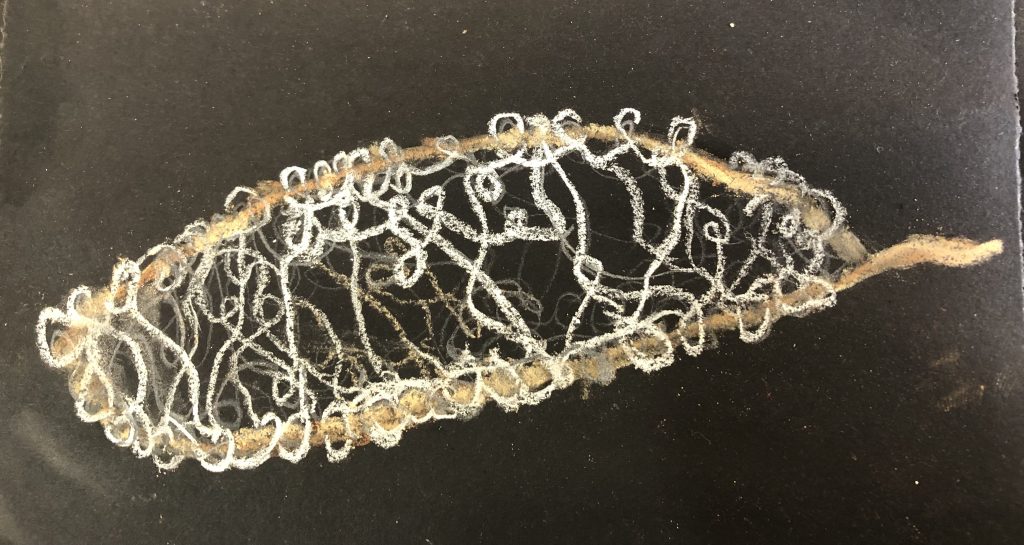
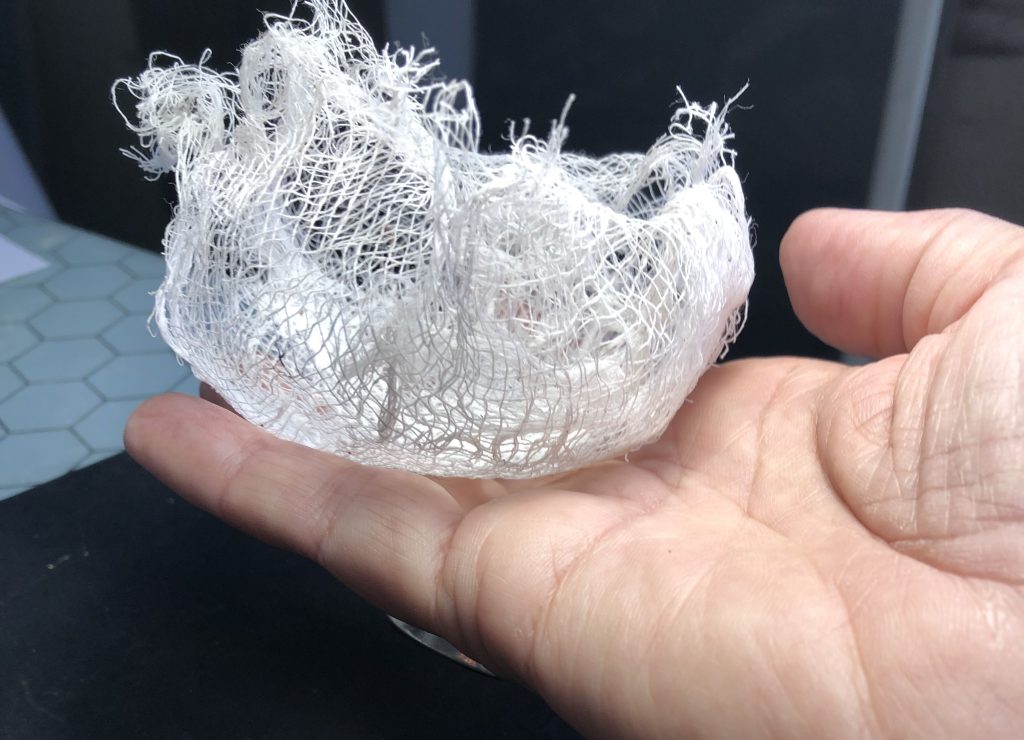
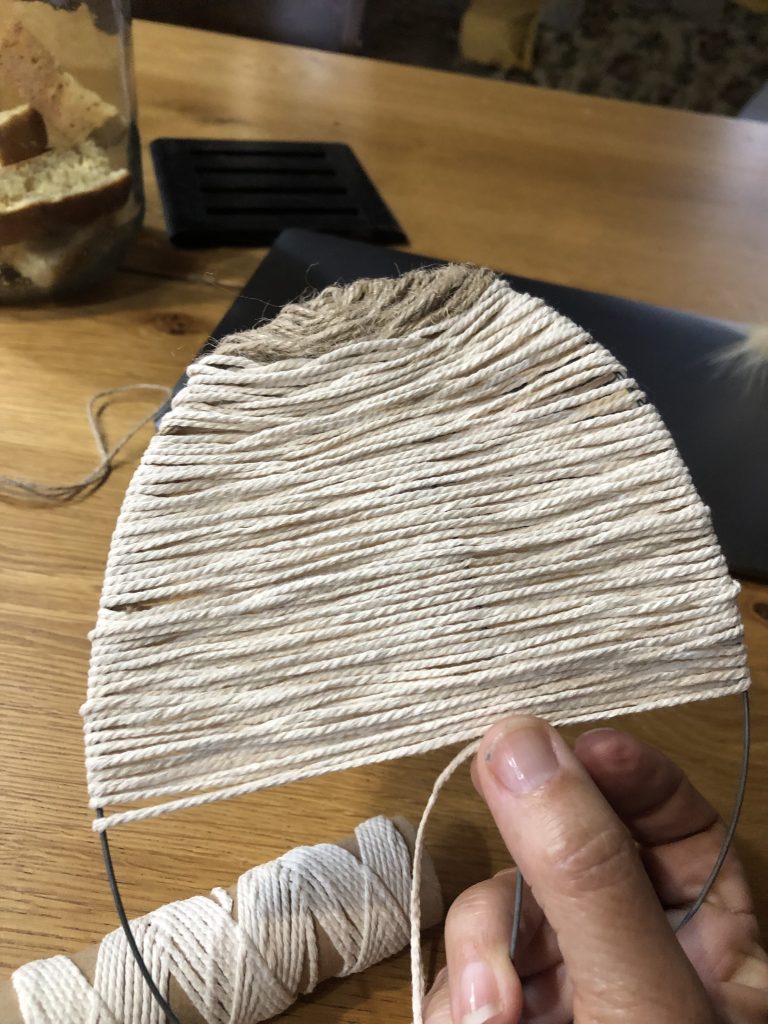
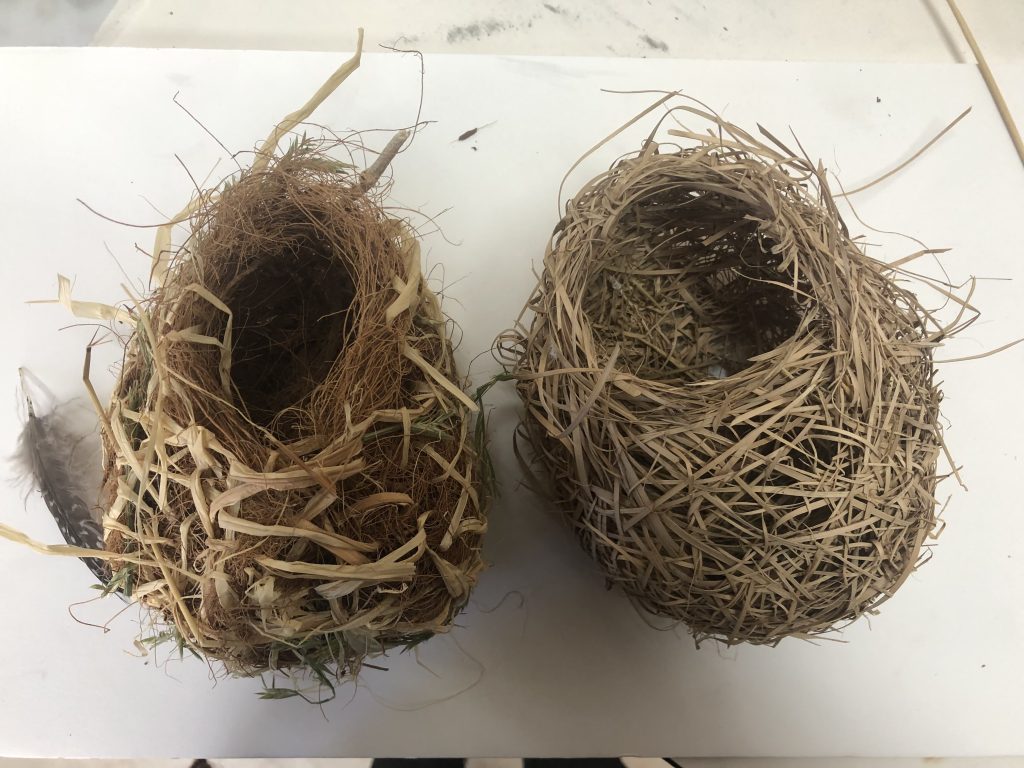
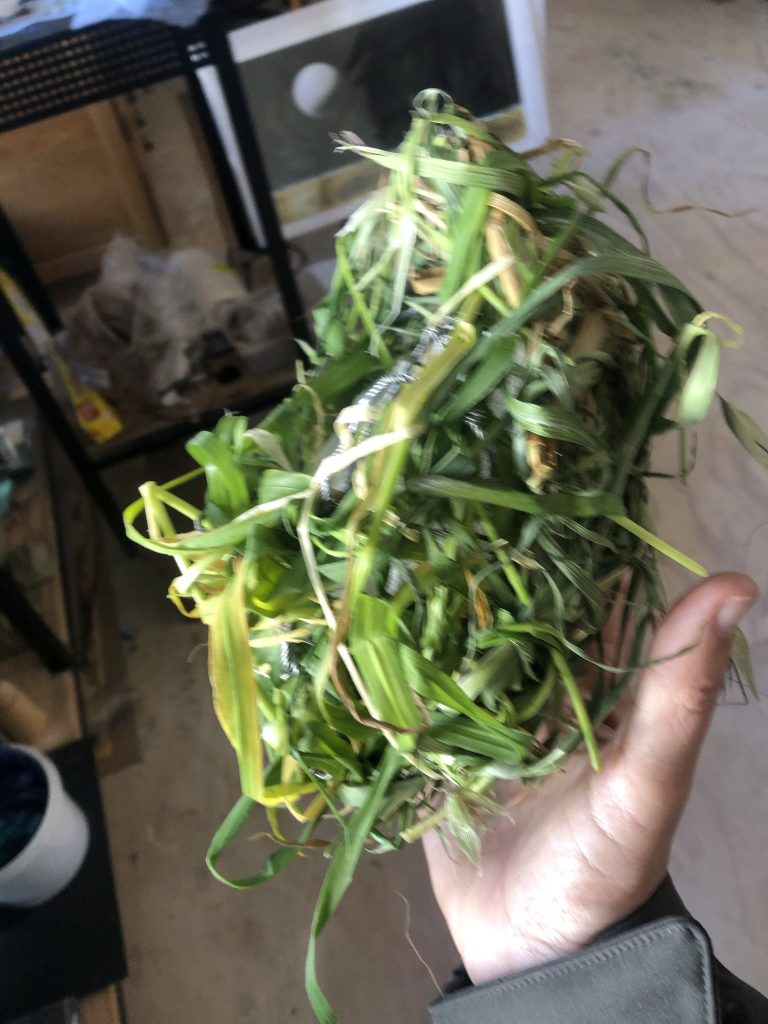
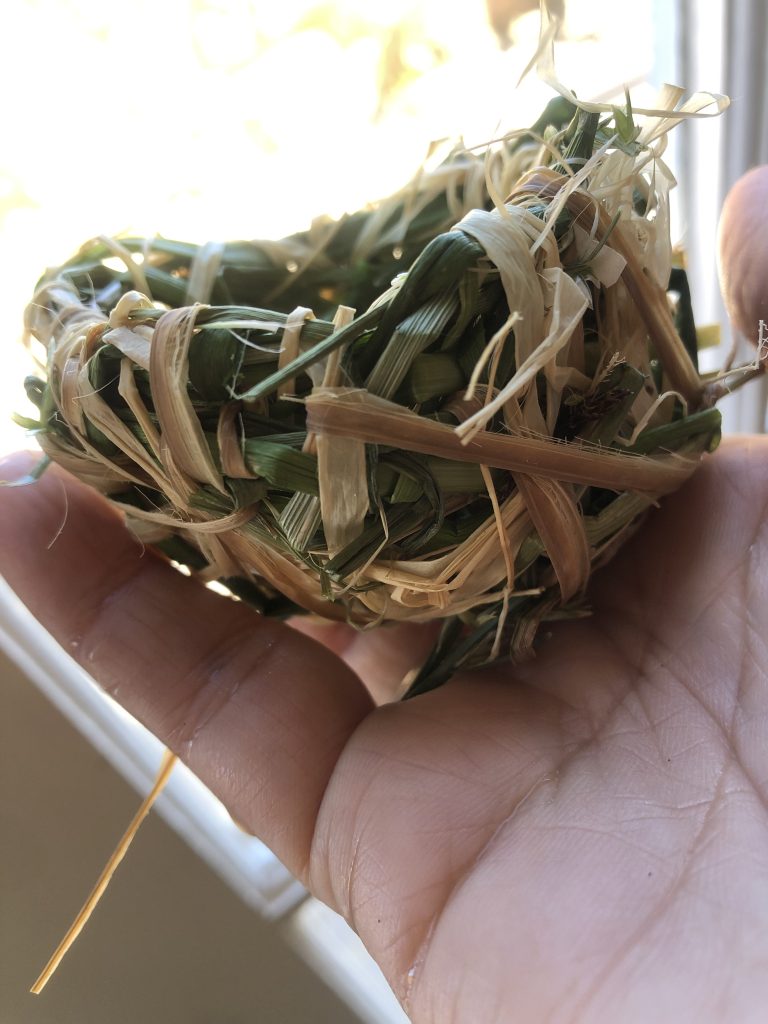
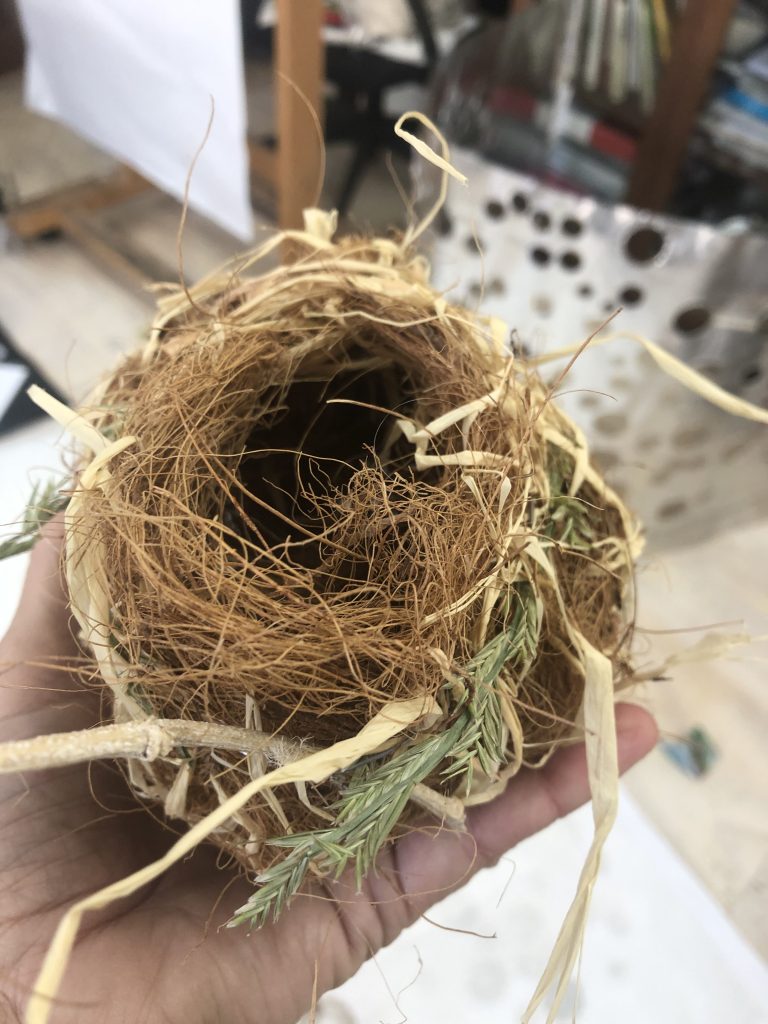
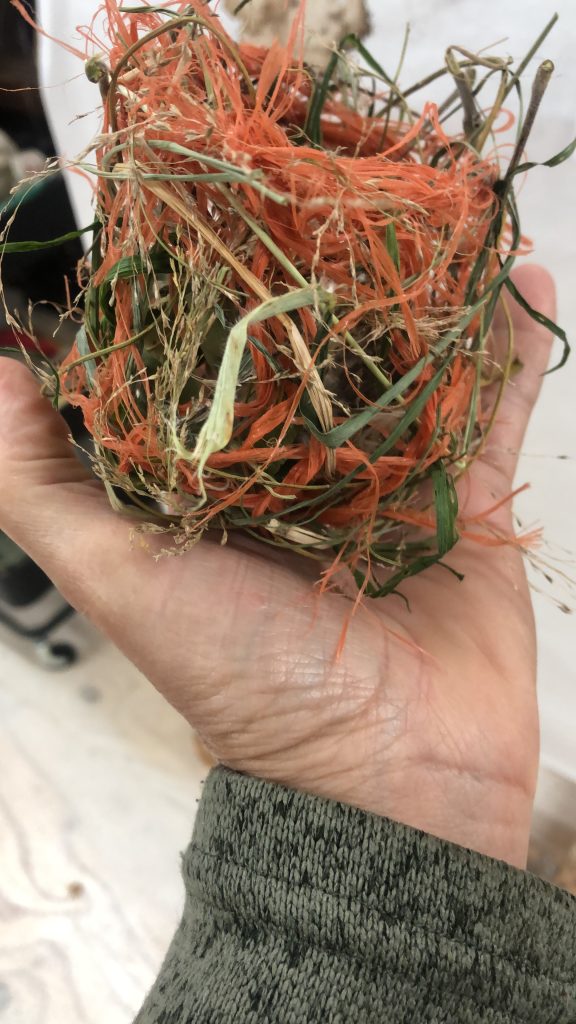
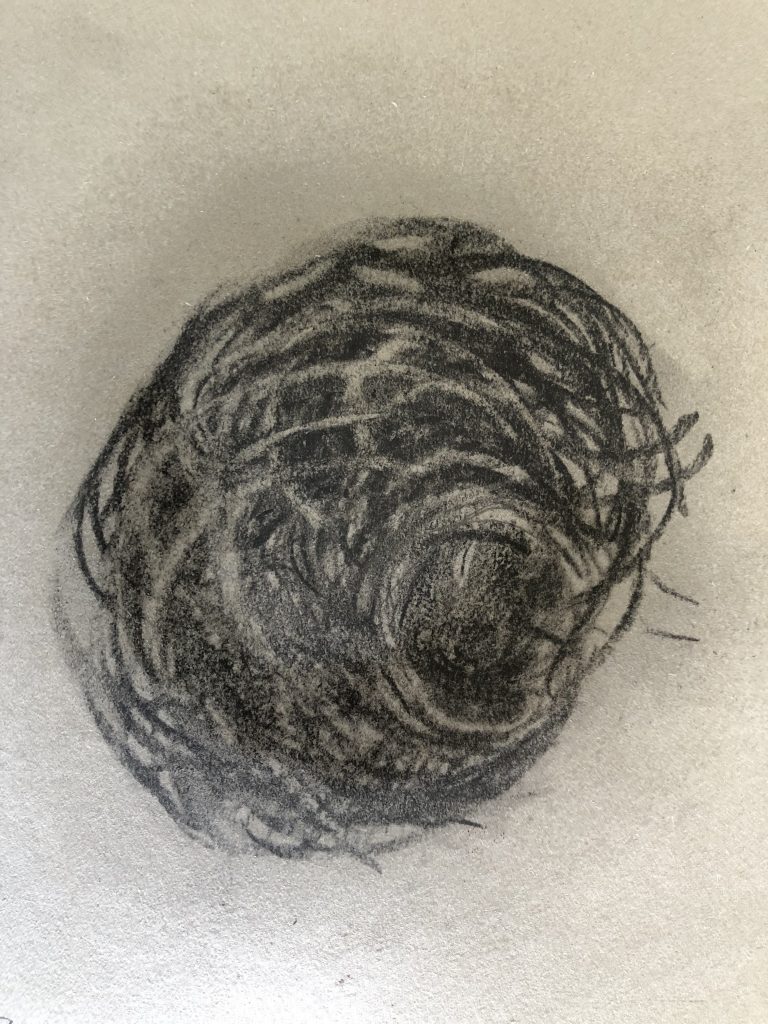
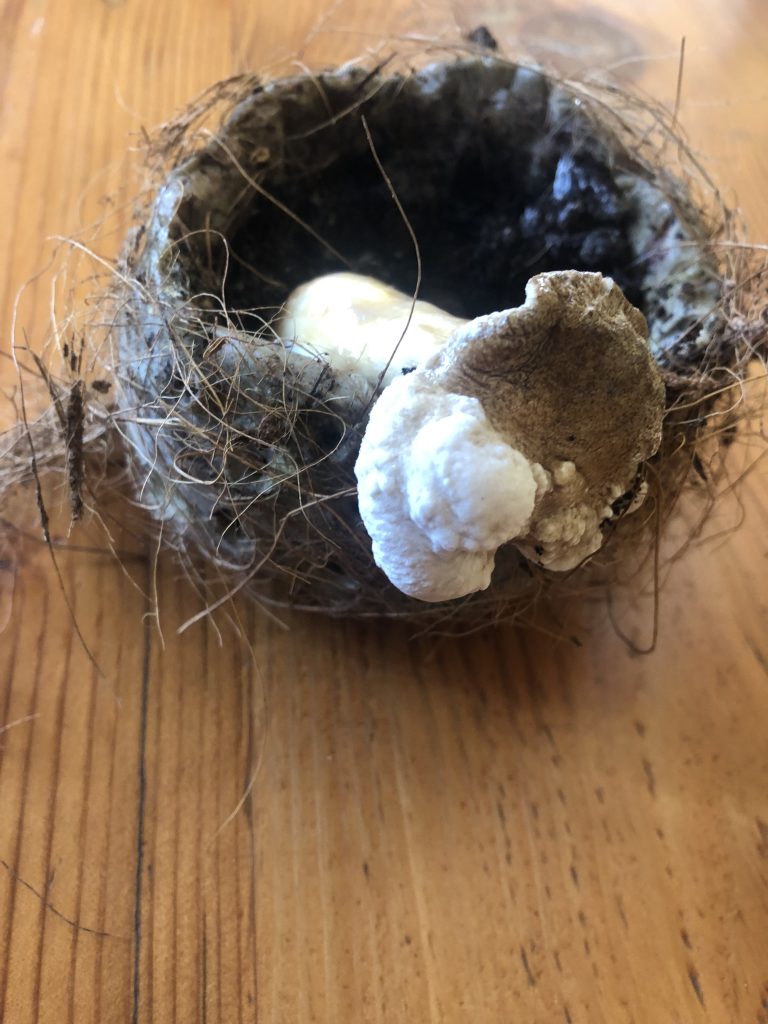
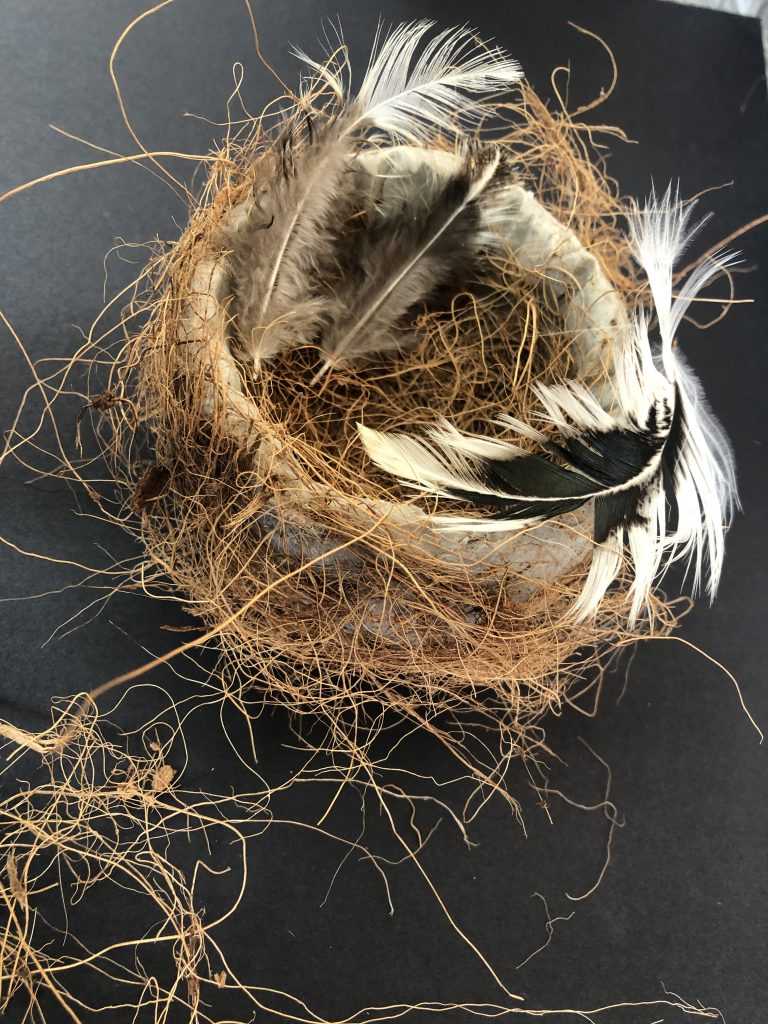

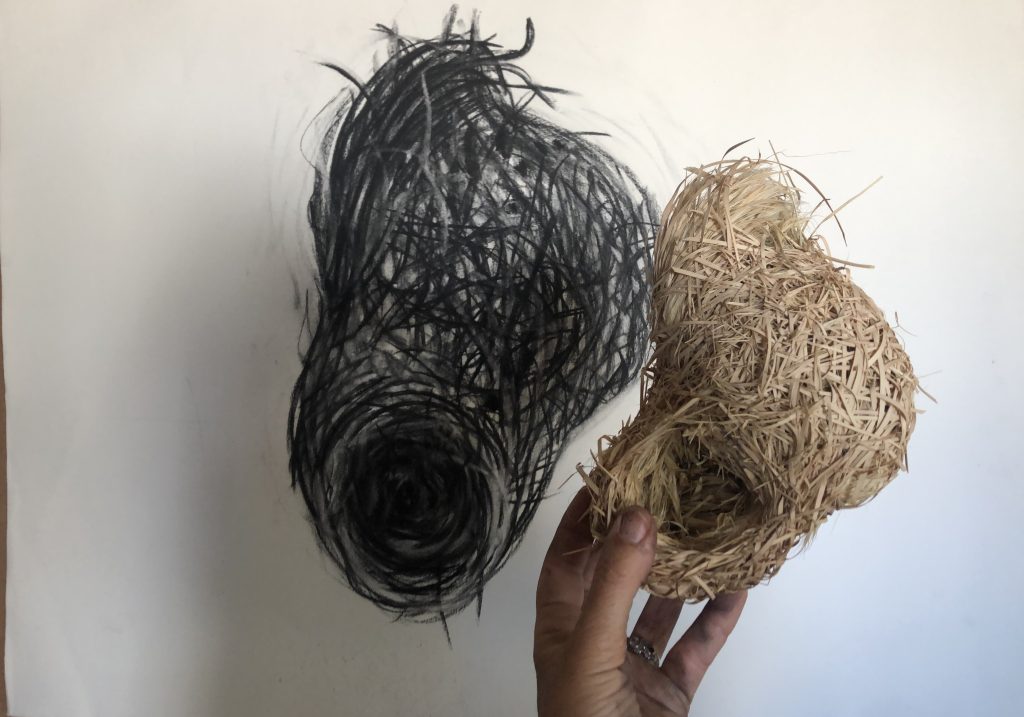
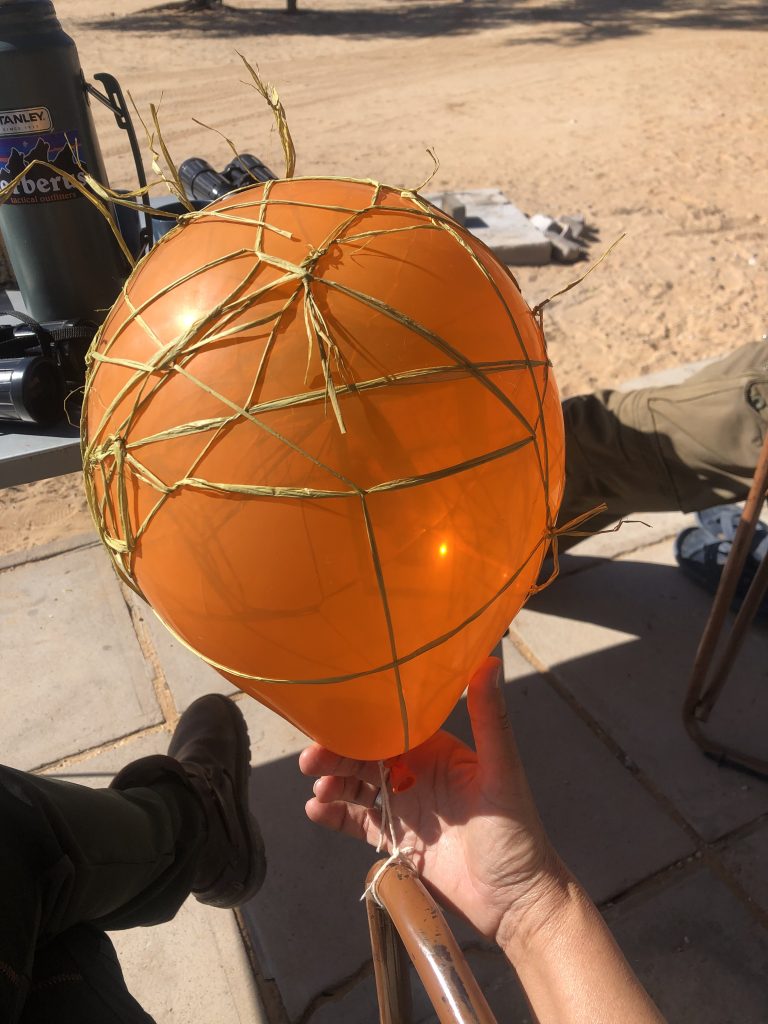
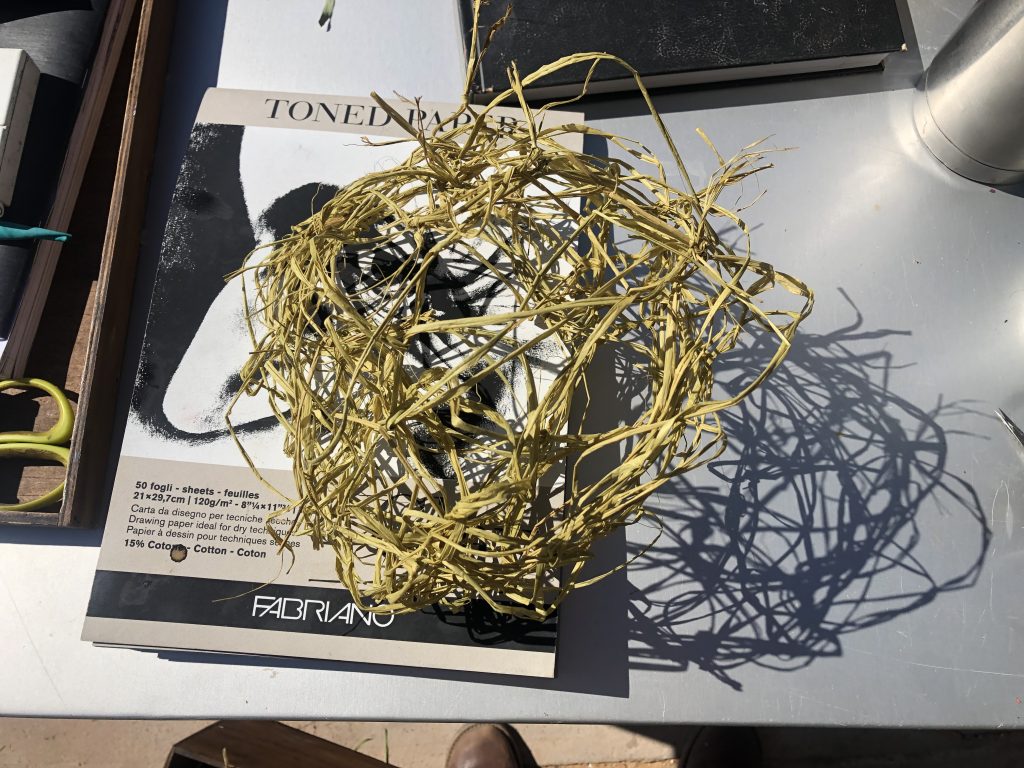
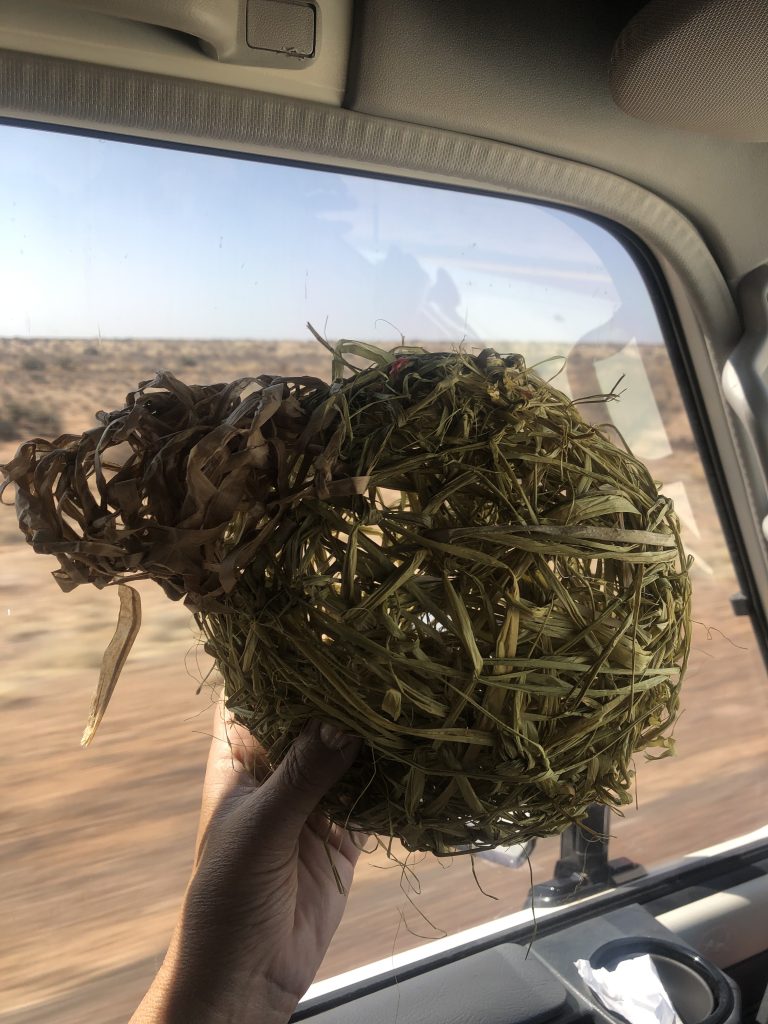
I am considering how materials have come to the forefront as co-creators or generators of an expected outcome. In terms of ideas around interconnectivity, I find this has caused a shift in my understanding of my materials, as I can state that they have become active agents in my work. I believe this is a link between my written and practical research that I will take forward during the rest of this course.
New ideas to explore during this research:
Self-portraits
I could also develop into 3d sculptures or process work where time becomes a player and documentation of the process is a focus. I
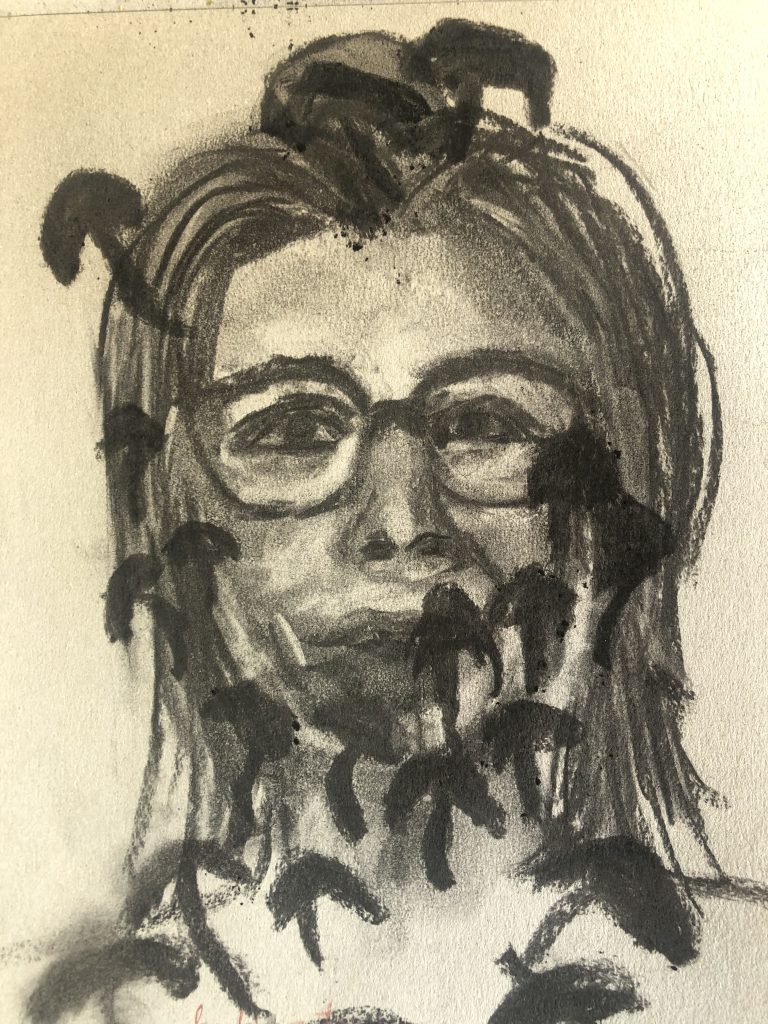
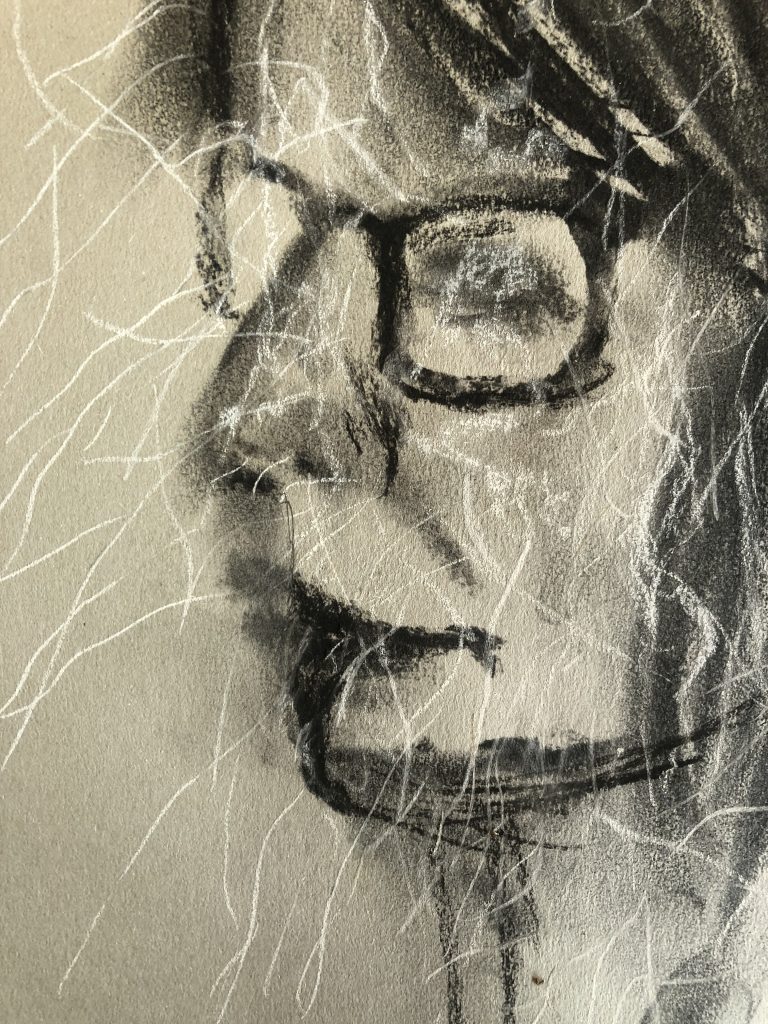
Assemblages:
I have also been looking at photography and colour and using our printer to explore objects. In the work below, I made a assemblage of found mushrooms and placed them on the printer to scan. I then used an app to layer more than one image on top of each other and then altered the colour of the outcome. I want to explore this as a video with sound.
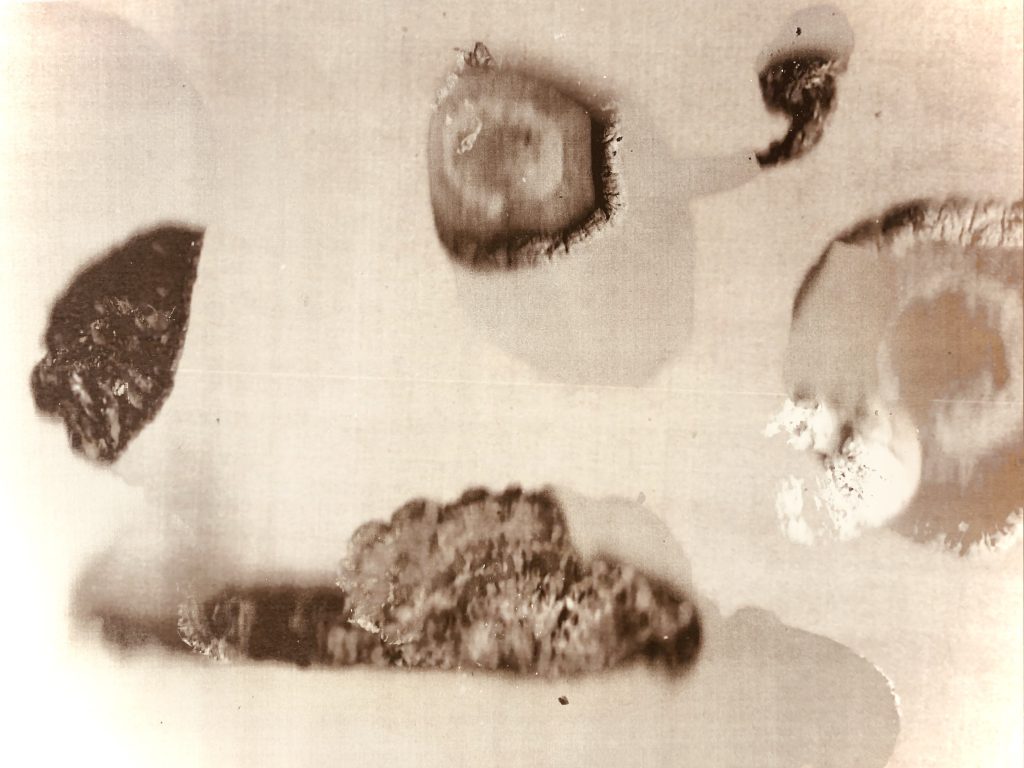
Lichen
I am inspired by walking and finding lichen in nature – It has been a cold and wet winter, and in my area, I have not had many recent encounters with mushrooms. A friend contacted me to collect a beautiful species found on their firewood. The textures remind of knotted wool – in shades of violet/purple, waxy and fluffy and look like little landscapes on the wood. I learned that the wood is from an old olive tree and that this species is called Violet crust, and that it is a saprophytic fungus. This species grows typically in tropical and subtropical zones, has some parasitic tendencies, and is found in deciduous forests on rotting wood. I wonder how long will they continue to grow on this wood, which is now in my studio. Can I learn something about the perfect conditions and decaying from them?
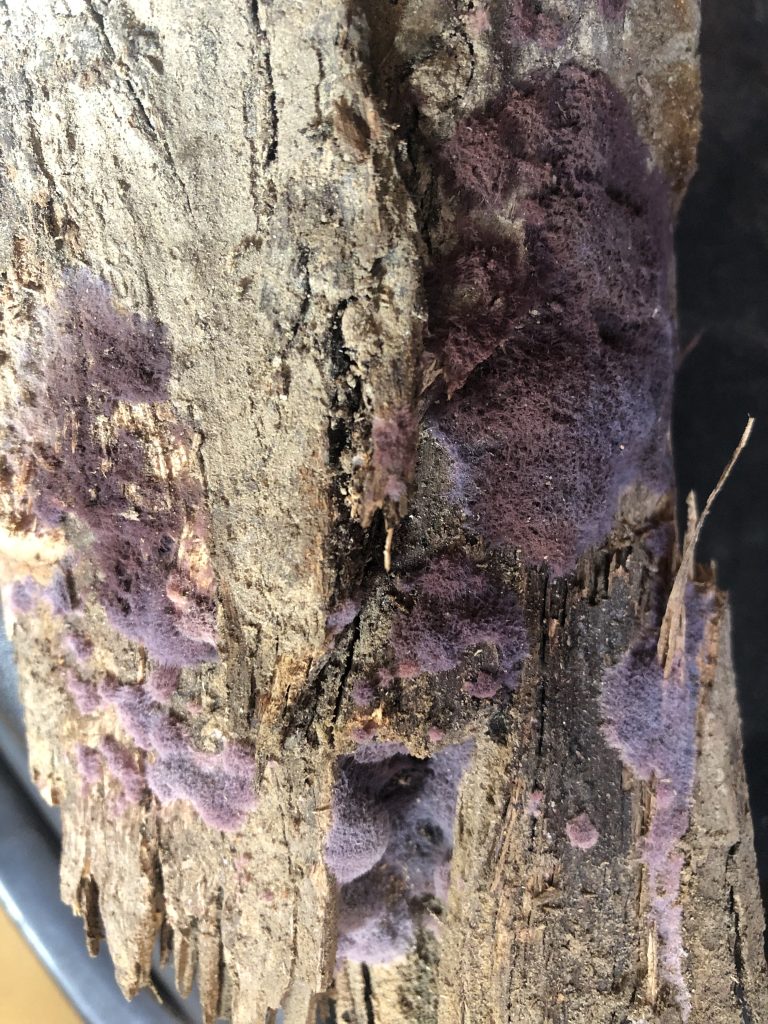
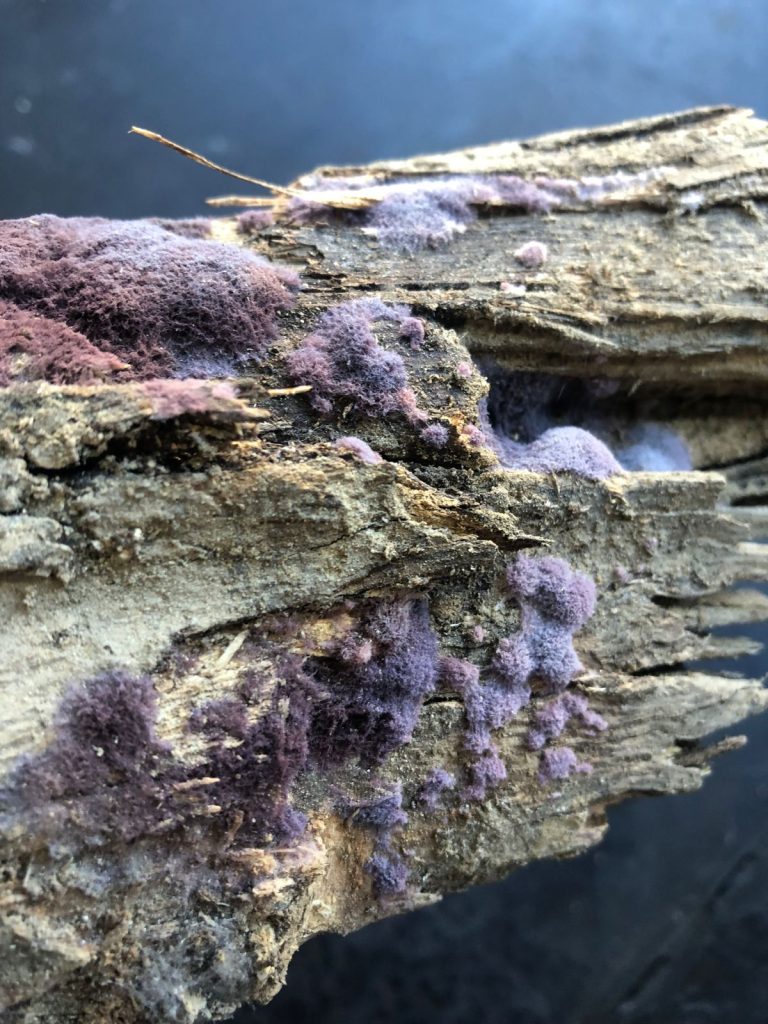
List of Illustrations
Bibliography
https://www.globalcitizen.org/en/content/ubuntu-south-africa-together-nelson-mandela
https://repository.up.ac.za/bitstream/handle/2263/28706/04chapter4.pdf?sequence=5